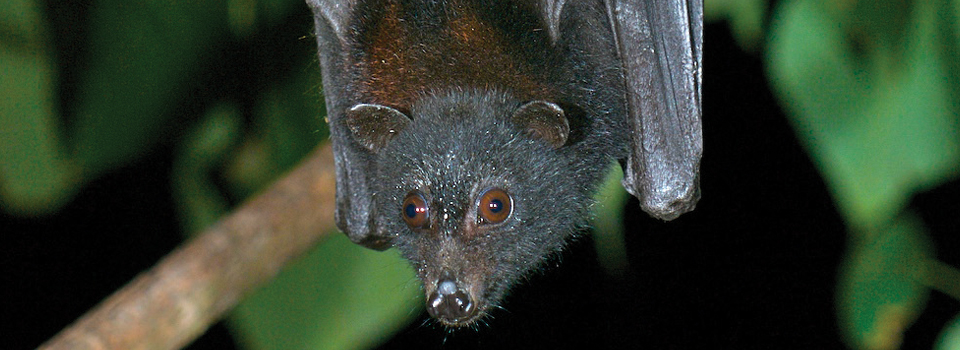This unit introduces year 8 students to the digestive and reproductive cycle of the flying-fox and compares them to the human systems. It encourages students to explore how these systems have evolved to ensure their survival. Finally it encourages students to think about how the survival of flying-foxes is now in danger because of these adaptations.
Lesson 8.1 Digestion and droppings
Students compare the human digestive system to the flying-fox digestive system through labeled diagrams. They complete a table of similarities and differences of the organs and functions and explore reasons for the differences. Students then look at whether flying-fox saliva and faeces pose a health risk for humans.
Activity 8.1B The digestive system of flying-foxes
Fruit bats and fig trees
Flying-foxes drinking, Wolli Creek, NSW
Lesson 8.2 Flying-fox reproduction
Students are introduced to the flying-fox reproductive cycle and compare it to the human reproductive cycle. They explore some of the mating rituals of flying-foxes and experiment with their own sense of smell. Finally, they look at some of the reasons why the flying-fox’s reproductive cycle is working against them.
Activity 8.2A Reproduction of flying-foxes
Mating fruit bats – Wild Indonesia
Activity 8.2C The sounds of flying-foxes
Flying-fox calls while feeding (WAV 4.3MB)
Lesson 8.3 The bat dilemma
Students are introduced to the issues between humans and flying-foxes. As part of a jigsaw activity, groups of students read a section of ‘The bat dilemma’ a report published by 612 ABC Brisbane Radio which covers some of the issues concerning flying-foxes. Student groups are then rearranged and given a quiz. Finally, they are asked to write a letter to someone who has been using air horns to try and move flying-foxes on.
Flying-foxes have other specialisations that are not mentioned in this unit. For more information, see Year 5 Adaptations of flying-foxes.


